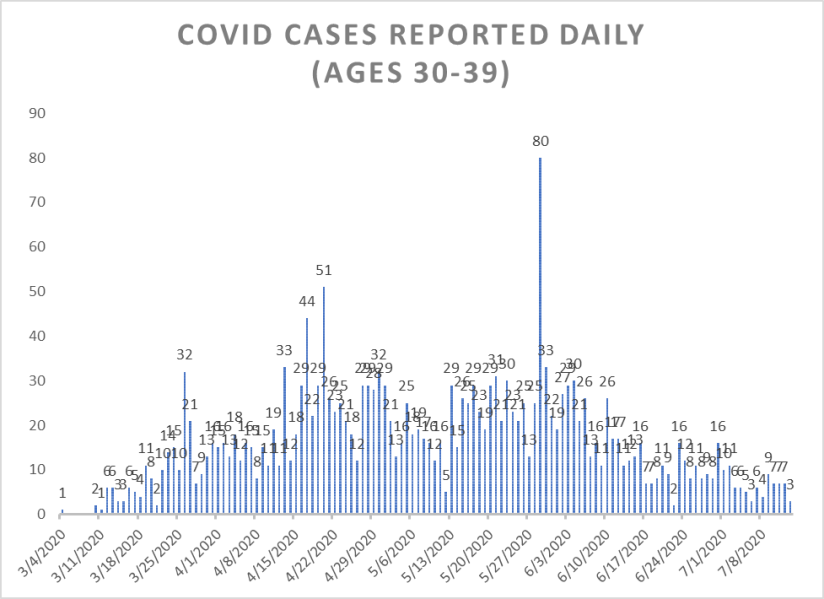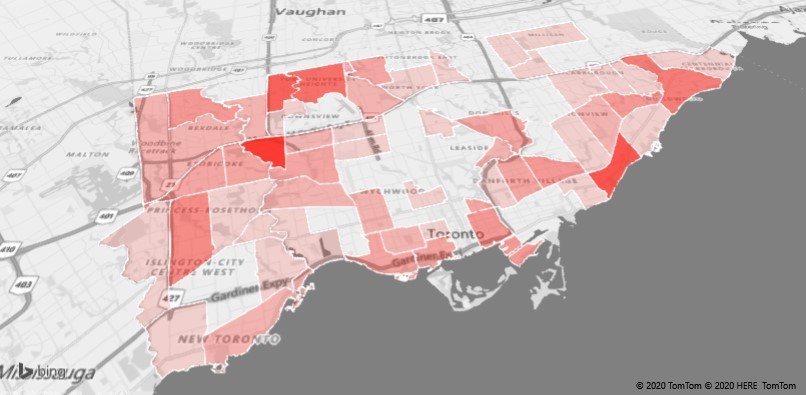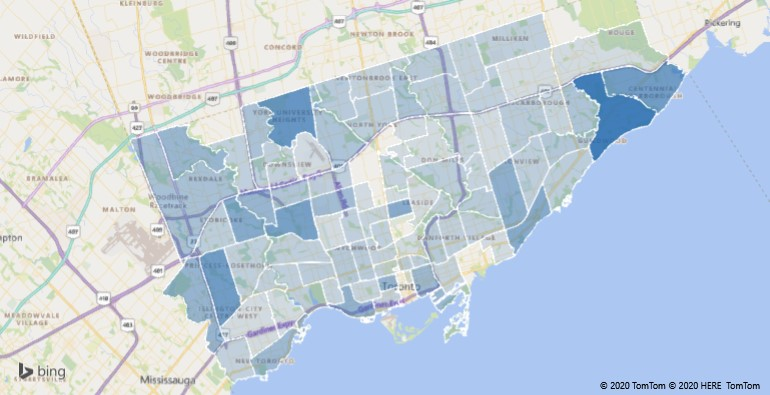Of the approximately 15,000 Covid-19 cases in Toronto, over 70% can be traced to either “close contact” (e.g. residing in the same household with a confirmed or probable case) or an outbreak. “Community” infections (i.e. not due to travel or close contact or a known location) account for almost 15% as per the chart below.
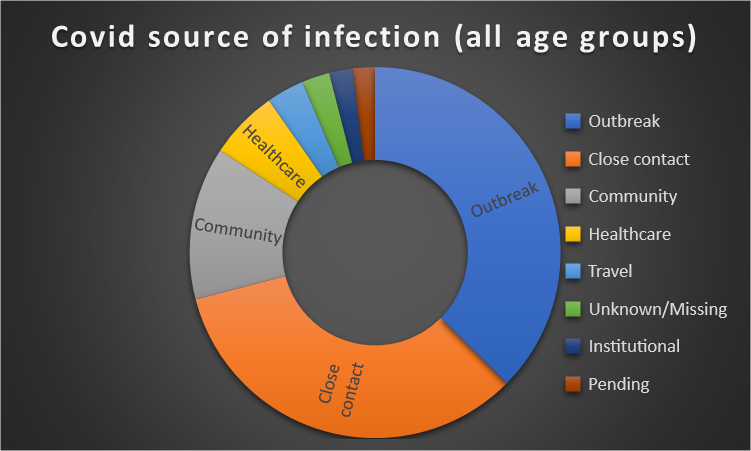
However, sources of infection vary by age group. First, let’s look at the youngest age group, which is 19 and younger. For this group 77% of cases were due to close contact. While outbreaks account for 10% and community transmission for 7%.

Secondly, let’s look at the oldest age group, which is folks 90 and over. For this age group 93% of the cases were due to outbreaks. This information is consistent with the news of several outbreaks in long-term care facilities.
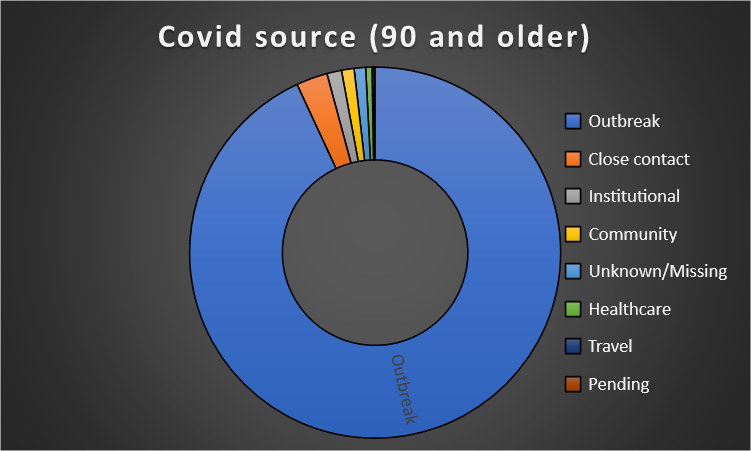
Thirdly, let’s look at a middle-aged group those between 30 and 39 years of age. For this age group 38% of cases were due to close contact, 24% linked to outbreaks, and 17% caused by community transmission. The fact that community transmission is higher for middle-aged groups (compared to the young and the elderly) is consistent with the fact that middle-aged adults are most likely to buy groceries, run errands, go shopping, work in essential services etc. than youths and the elderly.
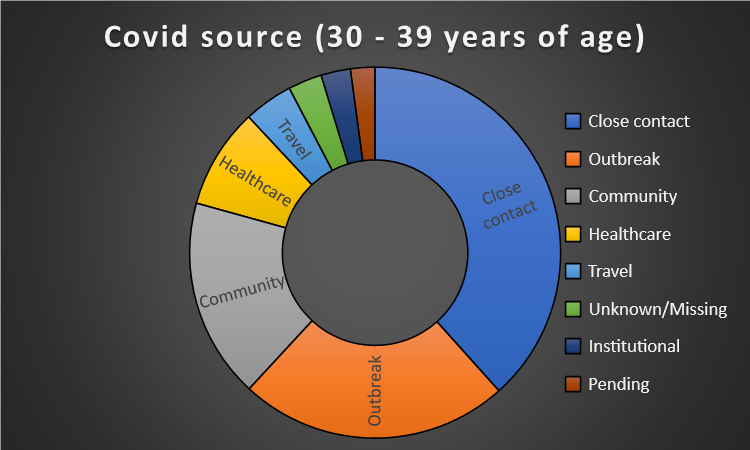
From the above we can conclude that youths are more likely to get infected due to close contact, while the elderly are more likely to get Covid-19 because of an outbreak. Furthermore, we can also conclude that community transmission is a risk, since people who get Covid-19 due to community transmission are likely to spread it via close contact to their partners, families, friends, roommates and co-workers. Consequently, we all still need to wear face masks outside of our homes, practice physical distancing and wash our hands frequently. Stay safe and listen to the science.
(Credit: this data comes from Open Data TO)
